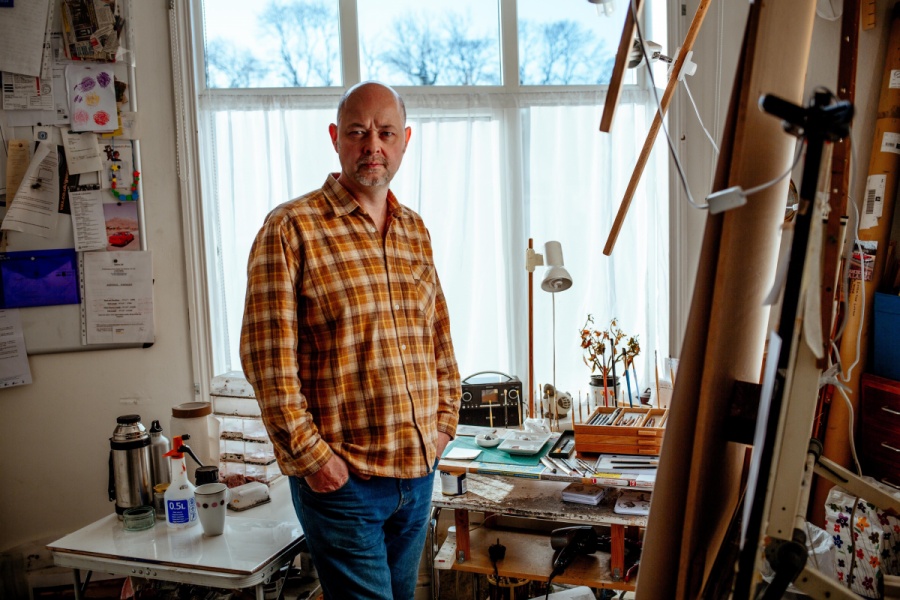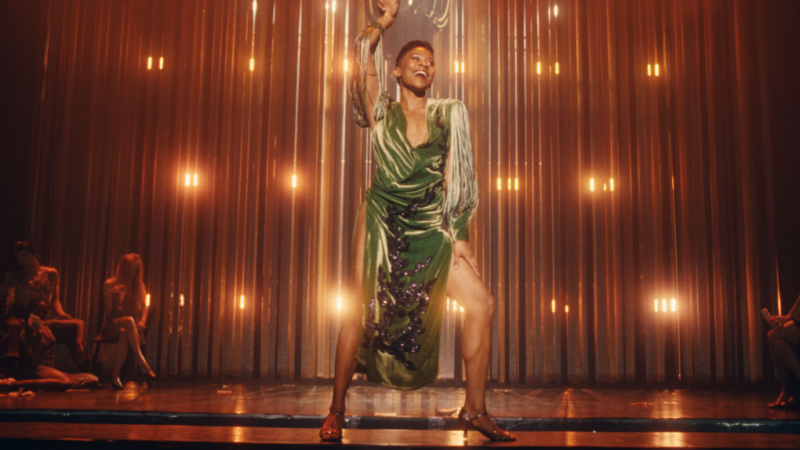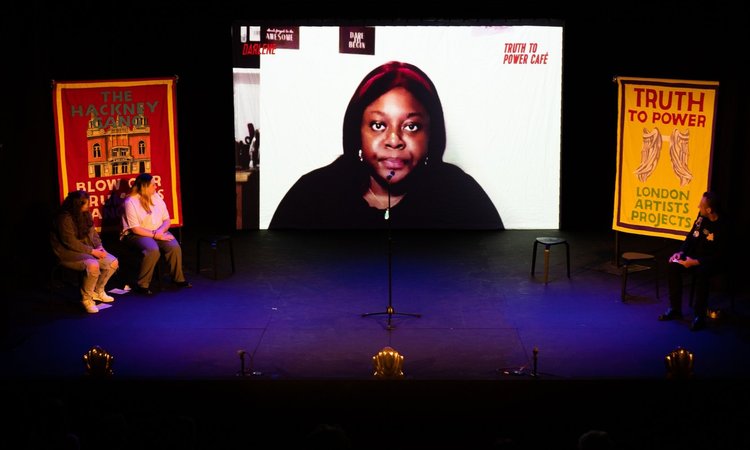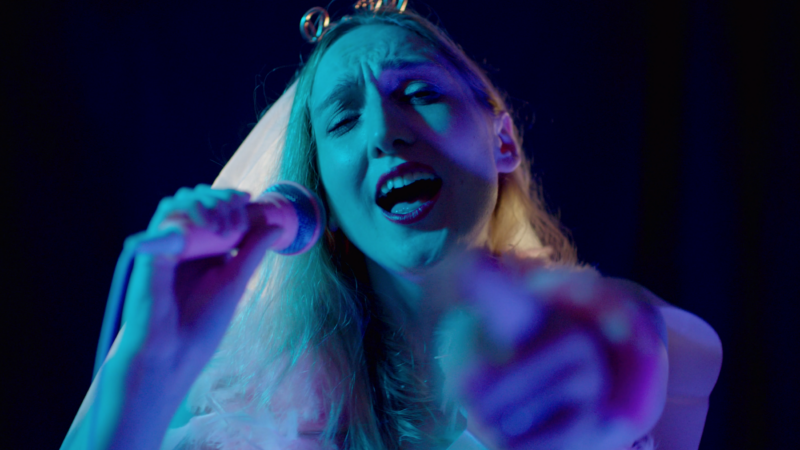A case study in bringing local artists to a global audience
How can a regional arts organisation use digital content and platforms to bring local artists onto the worldwide stage? This case study explains how the small team at Creative Black Country learned to translate their hugely successful 100 Masters regional project into global online success –– and do so in ways that evolved from their work yet never changed its roots.
What’s it about?
“Creative Black Country’s 100 Masters was an existing non-digital project,” says The Space’s associate producer Rob Lindsay, who later advised on the digital elements. “It was a real-world project, a regional one in the Black Country of the UK, where they were celebrating contemporary craftsmen and women in the area.”
The project was being led by Parminder Dosanjh, the Creative Director at Creative Black Country, who says that 100 Masters was always planned to have a digital element, but that the regional part came first. “We always knew we wanted to use digital,” she says, “but we had a phased approach where we started with a print campaign with the local newspapers to raise awareness and encourage locals to nominate people. We had this wonderful phase where several community members shortlisted the final 100 Masters and we introduced them slowly with the print campaign and on our website.”
It was then that Creative Black Country applied to The Space commissioning round for support. Dosanjh says that of course any project needs some online or digital aspect, but it became clear that it was going to be vital for 100 Masters. “There were such interesting people we were coming across. Their narratives were global, they weren’t unique to the Black Country, they would be able to resonate worldwide. There was so much interesting content that the only forum where we could begin to explore it all and to share the work would be online. There was no other way we could do it.”
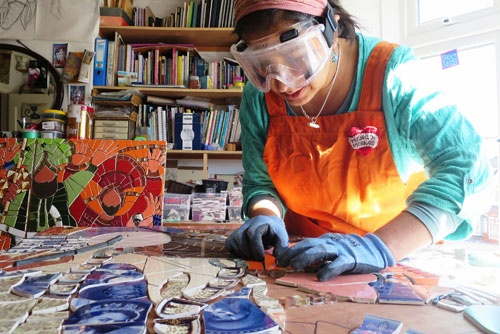
Lindsay agrees about the global appeal and says that for him, it was a key part of why this project was so interesting. “Someone told me that he really loved 100 Masters because Creative Black Country didn’t use the word ‘art’ or ‘arts’,” he says. “They just talked about sculptors, poets, film-makers, and they make it all very grounded and very inclusive. The strategy was always to continue that approach and go with the universal elements of the stories, that would be inspiring not just to creative people, but to people who need a bit of encouragement to be creative themselves.”
The centrepiece of the 100 Masters project was an exhibition. “It was insanely good,” says Lindsay. “It was one of the best I’ve ever been to and Creative Black Country had absolutely served their local audience. I think they are fantastic at community events and improving accessibility and they were doing this great big exhibition. They wanted to make some films and show those at the expo, but the feeling amongst the team at The Space was that they were missing a trick.”
The original plan had been to commission people to make half a dozen short films in response to the 100 Masters project. They’d already had photographers profiling the artists and this was an extension of that. “However, they had 100 stories, they had 100 people,” says Lindsay, “which is a fantastic array of potential content for an online channel.”
Once Creative Black Country began working with The Space, the films became part of the online offering –– and that online offering became the element of the project that achieved global success.
Solving technical challenges
Perhaps the hardest part of the 100 Masters project was the size of its scope, the amount of material –– and the size of the team. “There were three people as well as myself,” says Dosanjh. “We have a marketing manager, an administrator and a producer. They all jumped on it, they were all really excited and they embraced it totally.”
Nonetheless, they were already producing this extended regional project and they now had to learn extra skills. Yet both Creative Black Country and The Space were set on having as much work as possible done by this in-house team and especially so because, says Lindsay, that team had already done so much.
“The big problem with online strands is that they have to have researchers coming up with stories; they have to keep thinking about what they are going to talk about next time,” he says. “But of course Creative Black Country had done all that heavy lifting. They’d spent months finding out who these people are that their audience care about.”
Dosanjh says that she also learned that to achieve the digital plans, it had to be the whole team that was trained in everything, it couldn’t be divided between them. “At first it was just going to be our producer who was going to lead on the project,” she says, “but we realised really quickly that if you’re relying on one person and that person moves on, you’ve got a gap again. You need to spread the skill through the team.”
That team also had to manage the global scope of 100 Masters within a practical, sustainable budget. “We talked about creating a playbook – that was the first time I’d hear that term –– which was a bible or kind of a toolkit of guidelines for how we produce material,” says Dosanjh. “I think that was really helpful for how we then created consistent material that has a brand and a regularity to create an identity for the project.”
The approach
Creative Black Country’s original print and local campaigns to get 100 Masters started did include social media work. “Our team was quite savvy anyway in terms of social media and online,” says Dosanjh, “but we didn’t really know how to optimise the potential of it. We knew we had mass appeal with this project, we knew that it had no online presence but we also knew that the work would translate well to digital.”
Dosanjh explains that by the time they chose to apply to The Space, Creative Black Country was already very clear about both 100 Masters and what it wanted to achieve. “We knew we wanted to create some film, we knew we wanted to increase our following, and we knew that we had to do a lot of it in-house,” she says. “So for us it was important to identify what we knew, as a team, what we didn’t know, and what resources we had.”
Simply listing the 100 people on the project’s website, and doing so in a clear and accessible way, is a job in itself but both Creative Black Country and The Space thought it was important to highlight the series of films they were producing.
This meant both choosing which of the 100 Masters would make for the best films to achieve the project’s aims and then training the Creative Black Country team to make them.
“We initially looked at which stories would bring in younger audiences,” says Lindsay. “But we also went through to see who had stories to tell. So before we interviewed anybody, we thought about who’s got a story, who’s done something interesting. We then looked to see that we were picking a nice range of narratives and we had a think about the visual nature of it.”
With such a range of potential people to film, Creative Black Country and The Space together picked an initial series of subjects that could make the most immediate impact. “Looking at painters and sculptors and mosaic artists gave us an opportunity to have a very strong, eye-catching visual at the start,” says Lindsay, “while at the same time we were evolving what our approach to interviews would be.”
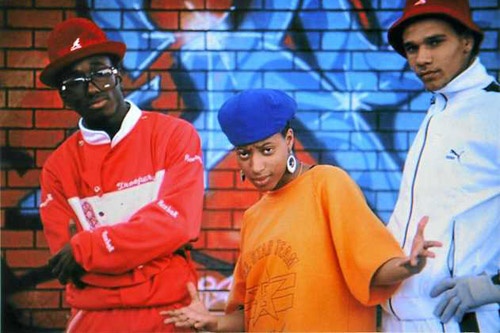
Dosanjh says that this thinking about the stories of the 100 Masters was as important to her and the team as learning the techniques of filming. “That was really good because I don’t think the team had those journalism skills. They learned how to ask the right questions and tease out the right material.”
Creative Black Country could have hired a production team to make all its films, but both Dosanjh and The Space wanted a longer-term solution. “Our initial run of videos consisted of six pieces,” says Lindsay, “where I produced the first two, the Creative Black Country team shadowed the second two, and then created the final two themselves. This allowed us to monitor which elements of the process required additional support or training. We were very wary from the start of giving the Creative Black Country team lots of extra work to do every week.”
Audience engagement
Creative Black Country had already seen great success with the 100 Masters project in the region and now it started to see the same thing worldwide. “We had 22 followers on our Facebook page,” says Dosanjh, “and it grew to something like 80,000 by the end of our work with The Space.”
Facebook and Instagram followers were key parts of the digital project, but it’s the success of the films that is even more striking. They exceeded 10 million views.
“It was above and beyond our expectations,” she says. “I think we had expressed a target of reaching 12,000 people over the course of the project, and we surpassed that by millions. We attracted this global crafting community with one film and they just kept sharing it and sharing it and sharing it.”
Andrew Tift – Creative Black Country’s 100 Masters. Photo: Craig Bush
As well as individuals and groups enjoying the films, they attracted attention from other arts organisations. “What was lovely was that the response to the films was wonderful,” says Dosanjh, “and we managed to attract a global community, a global interest in the project and so there were a number of organisations around the world asking us how they could replicate 100 Masters.”
Outcomes and future developments
Creative Black Country is continuing to make films for its own 100 Masters project and is now also helping other arts organisations. “Four EU partners in different countries are all on board with taking on this model,” says Dosanjh. “It was wonderful to see the appetite for the project.”
“The team is now producing their third series of videos completely independently,” says Lindsay. “They’ve also embarked on a fact-finding trip overseas, and they used the trip to tell a series of stories from outside the region which will only have helped to build their profile as an international publisher.”
Creative Black Country’s 100 Masters was shortlisted for the 2019 N.I.C.E. award, part of the Network for Innovations in Culture and Creativity in Europe. It also won the EYA Open Innovation Award where jury member Karim Taga said: “I am glad that the rest of the world is able to take notice of the hard work that is being done by the people of the Black Country.”
Top tips around bringing a local project to a wider audience through digital platforms
- Plan for digital as early as you can. Even though Creative Black Country worked on their exhibition project first, they knew from the start that they would want to take it online.
- Create a playbook where you decide how every video will look, what each one will cover. You’ll save time later when you’re producing the videos but you’ll also create a consistent feel to them all.
- Train your whole team to do everything. This is especially important when you have a small group of people as losing any one of them can set back your whole project.
- Think about how universal your local stories are. The people featured in 100 Masters are all from one area but what they’re doing and how they’re doing it has worldwide appeal.
- Learn to do as much inside your own organisation as you can. Even if you have the budget to hire in film crews, if your team is able to produce videos to a high standard, you can do more and adapt faster to opportunities.
- Tap into the existing online communities around the subject or area of interest you are dealing with. They can be powerful advocates.
LINKS
How useful was this resource?

